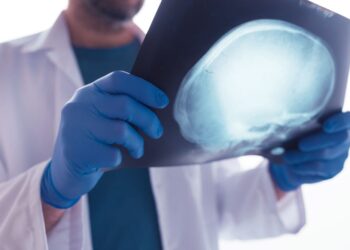For all the injuries that doctors fail to diagnose in a personal injury case, the one most commonly missed is concussion. Misconceptions abound around this condition ranging from believing that there needs to be a loss of consciousness to make the diagnosis to the thinking that you can just shake it off and get back out there.
So first, we must address the myths. The definition of concussion centers around an alteration of consciousness following a trauma. There does not need to be a loss of consciousness to make this diagnosis. There does not need to be direct impact of the head to have this condition. It is not necessary to have a diminished Glasgow Coma Scale score in order to make this diagnosis. In fact, most people who suffer a concussion in a motor vehicle collision will have a Glasgow total score of 15/15.
It is highly unlikely that you could damage structures in the cervical spine without causing injury to the brain and its associated structures. For a clinician who understands the mechanism of injury, diagnosing concussions is a nobrainer.
Given sufficient force to damaged ligaments, muscles, discs, and even bones in the cervical spine a coup contracoup injury is to be expected. This motion of the brain inside the cranium will cause impact as the brain bounces front to back or side to side.
This rapid motion of the brain can also cause trauma to the cranial nerves as they pass through fossa and foramina in the base of the skull. Traction on these nerves across the bony surfaces are likely to cause diminished functioning at the very least. This can measured with a proper cranial nerve exam to document the injuries.
Two other injuries that are commonly found are first, cerebellar tonsillar ectopic, which can cause severe headaches and a multitude of other symptoms has been found in 23.3 percent of whiplash cases. Also commonly seen especially with female patients is trauma to the pituitary gland, which controls hormones. While few doctors will pose the question, it is common for a woman to have menstrual problems after a collision.
With the opening of the Concussion Recovery Center, here in the Valley we can now provide you with the testing to validate the diagnosis along with treatment to support that. Some of this testing can even be administered in the attorney’s office.
We offer a four-stage testing protocol that begins with the Rivermead Post-Concussion Symptoms Questionnaire. This one-page survey addresses 16 areas of concern can be administered in your office after a crash. It comes with scales from 0 to 4 and if your client circles threes or fours that is a clear indication of a concussion. With positive findings on this questionnaire, we can arrange for your client to do a cloud-based, neuropsychological assessment. This takes about 30 minutes and includes a battery of tests to observe brain functions that are the established standards in the field of concussions.
The next step when this battery of tests indicates the patient has suffered a concussion is to perform a cranial nerve exam. Unfortunately, very few doctors do these tests, and many have told me they stopped doing it because they never really found any positives. The Dynamic Functional Cranial Nerve Examination developed by Lois Laynee checks all twelve pairs of cranial nerves and each of their functions. If your client has suffered a concussion in a collision this examination will find the injuries.
The final step when indicated is more sensitive electrodiagnoses and radiology. This includes the QEEG which reads beyond a standard EEG and can assist us in mapping areas of the brain that are no longer functioning properly.
With a personal injury case, diagnosing all the injuries is paramount. Our testing clearly supports that diagnosis. The protocol for addressing the concussion at the Concussion Recovery Center focuses on retraining the cranial nerves to function properly. The treatment program that follows is designed to retrain each of these nerves and each of their functions allowing us to demonstrate improvement or permanence on follow-up examinations. Dr. Bill Gallagher, DC, CMVI










